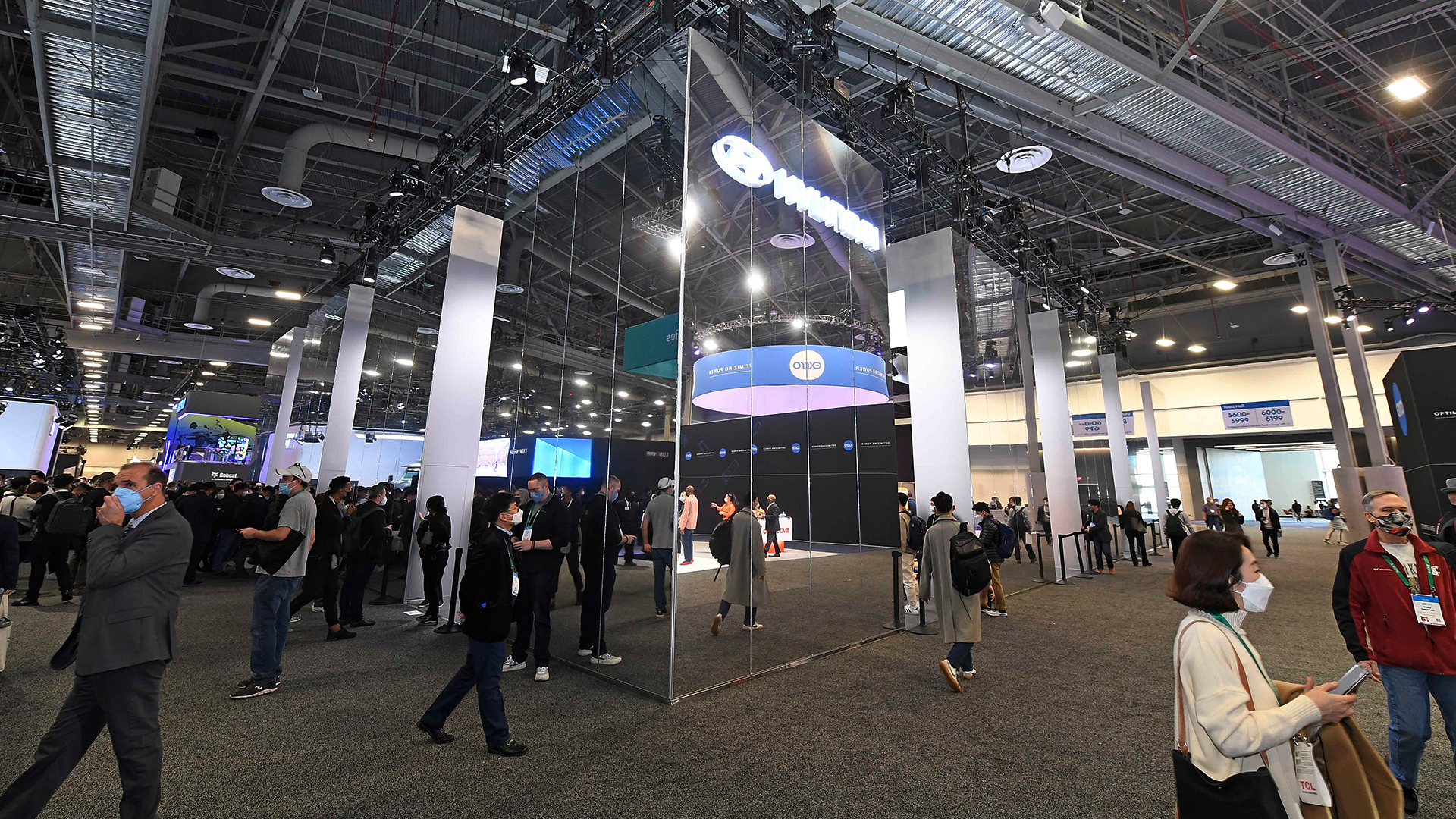
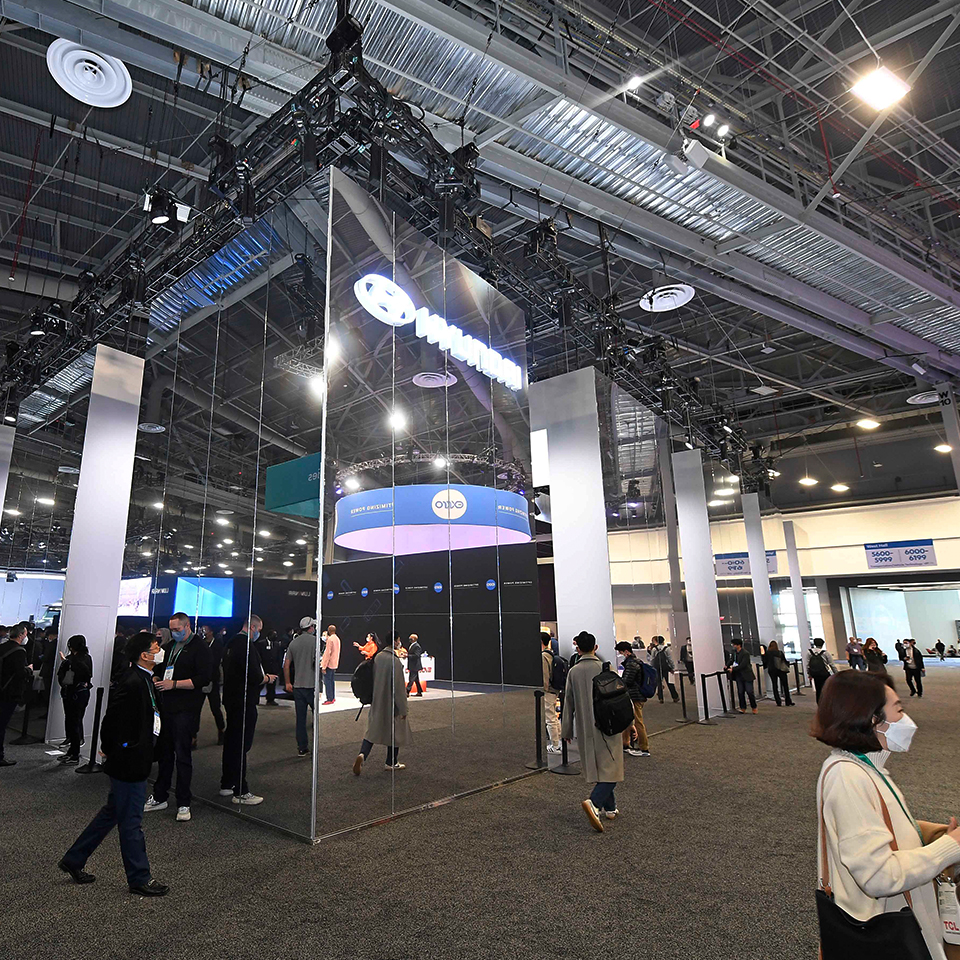


The current automobile industry is not limited to just automobiles - because the convergence with ICT technology is accelerating. For this reason, more cars took to the stage at The International Consumer Electronics Show (CES). CES is an international electronics convention that started in 1967 in the United States. The show built its reputation as the market for home appliances such as TVs, refrigerators, air conditioners, and VCRs grew rapidly. However, since the 2000s, focusing on technology has allowed it to cover a wider range of areas, and automakers have also begun to showcase various cutting-edge technologies at CES.
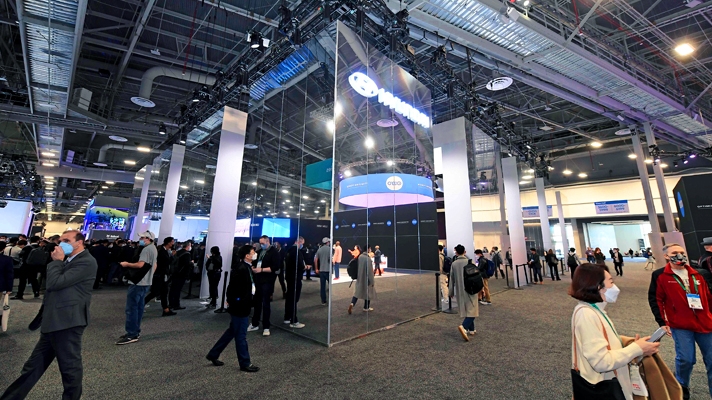
Hyundai Motor Group has also participated in CES since 2009. This year, Hyundai Motor Company announced the ‘Robotics Vision', proving that it is a smart mobility solution provider. Ordinary automakers will never showcase their robots in the center of their stage; However, Hyundai Motor Group is planning its future mobility anew in June 2021 by buying a controlling stake in Boston Dynamics, an American robotics company; and at the center of the automaker's blueprint lies ‘Robotics’. This is a compound word of robot and science and technology, and it is the field of research on robots and artificial intelligence.
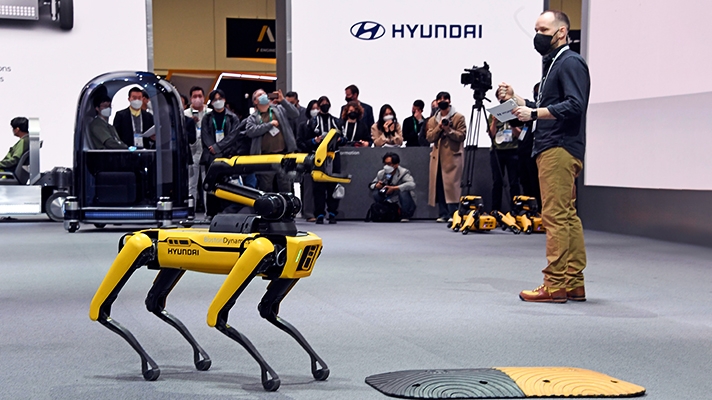
Robotics can work in virtual spaces as well as integrate future mobility, including autonomous vehicles, logistics, urban air mobility (UAM), and more. When robotics technology can support ‘Metaverse’ and mobility, human mobility will open a new chapter beyond the current limits. Here are Metamobility, MoT (Mobility of Things), and intelligent robots that Hyundai Motor Group showcased at CES 2022.
*Metaverse: A compound word of meta meaning virtual and universe meaning real world - the mixed reality referring to the interaction between the virtual and the real world.
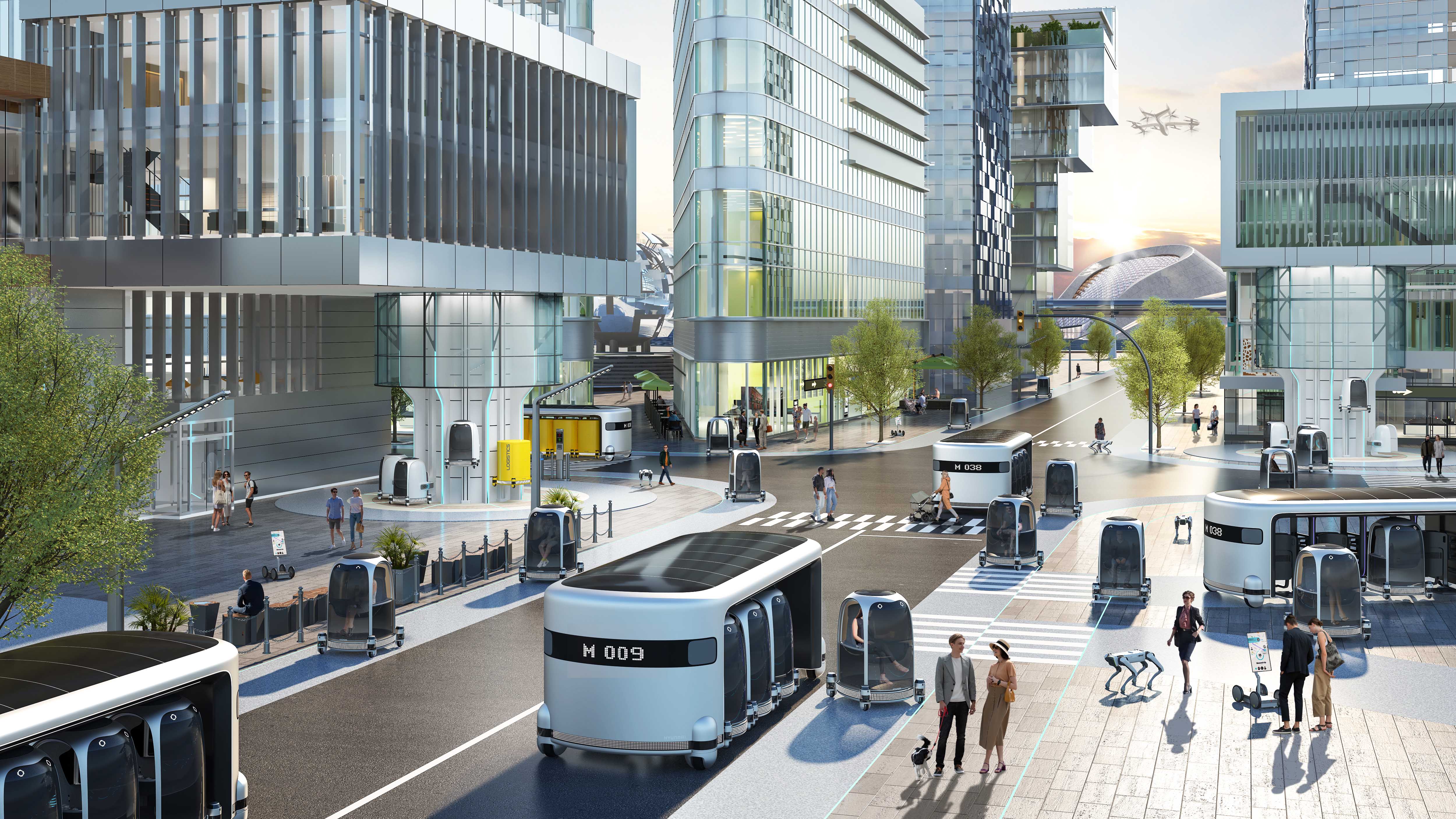
Metamobility refers to the combination of metaverse and mobility. The meaning of movement will be expanded through the metaverse and smart devices. Hyundai Motor Company expects that a new metaverse platform that combines real and virtual will become a reality. Furthermore, mobility such as automobiles and UAM (Urban Air Mobility) will become smart devices and be connected to the Metaverse platform to provide users with various experiences in a realistic virtual space.
The cabin of the future will be a space that connects the virtual and the real, and robotics will make this possible. If a passenger accesses the metaverse platform with a smart device and connects a robot to it, what you do in the virtual space is connected to reality; It will be a whole new level of experience. For example, through the ‘Digital Twin’, which implements machines, equipment, and objects in the real world in the same way in the virtual world in a computer, you can work anywhere in the world.
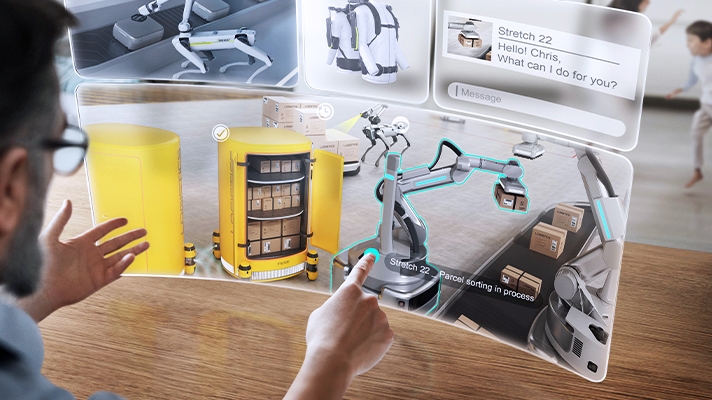
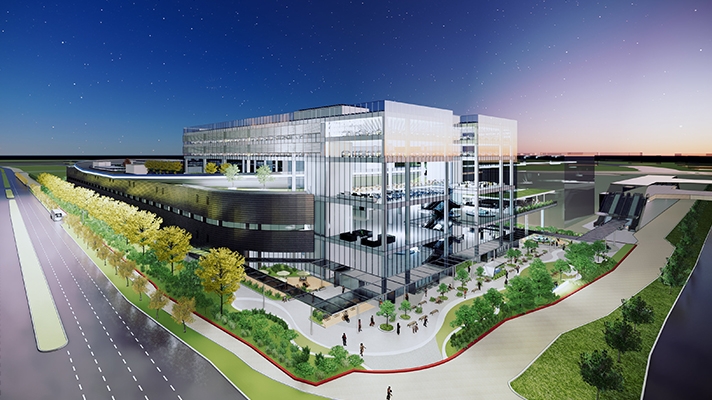
Hyundai Motor plans to establish its first digital virtual factory, the Meta-Factory, by the end of 2022. The 7-story Hyundai Motor Group Singapore Global Innovation Center (HMGICS) at Singapore Jurong Innovation Complex on 44,000 m2 ground area with 90,000 m2 floor area will be built by then, and its twin building will also be created in virtual space. The automaker has created a strategic partnership with Unity, a platform company that builds a global metaverse environment and develops/operates real-time 3D content.
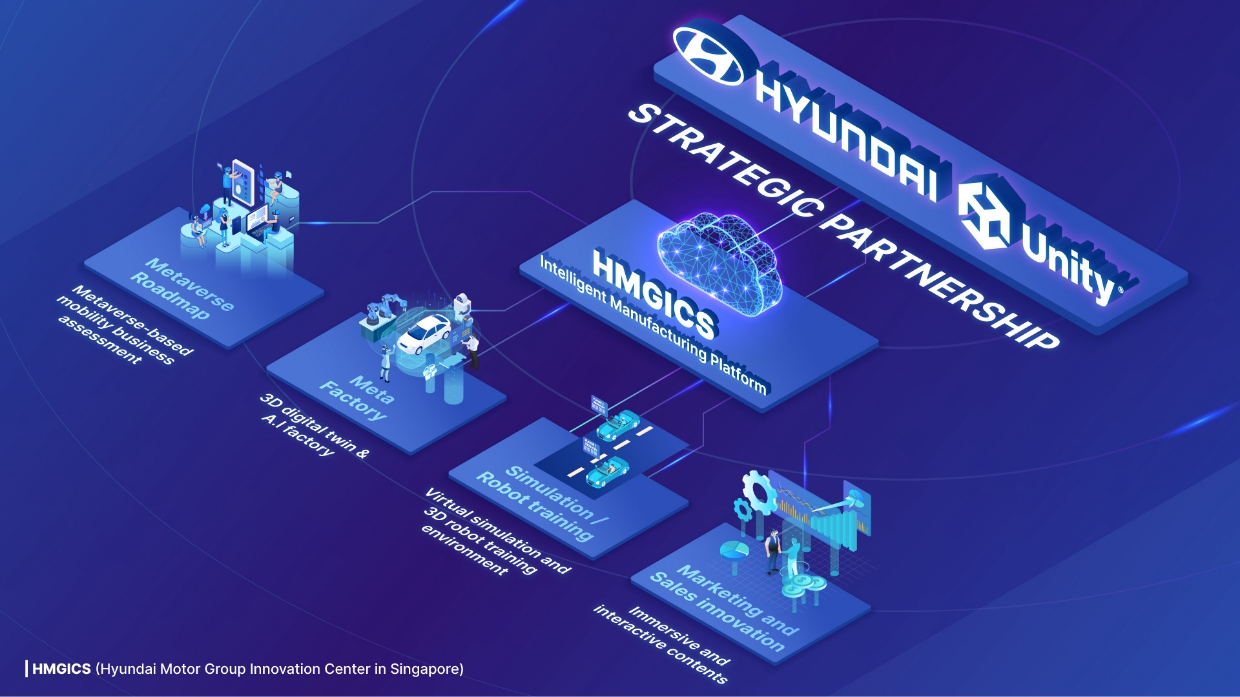
Metafactory increases the operational efficiency of the actual factory. Rendering a real factory in a virtual space in real-time makes it possible to quickly determine the cause and respond remotely when there is a problem in the factory. In addition, it is possible to calculate and reflect the optimized factory utilization rate through meta-factory operation before mass-producing new models. Hyundai Motor plans to strengthen cooperation with companies in various fields, including Microsoft (MS), while seeking ways to expand and apply Metaverse technology to various business fields as well as to build and operate the Meta Factory.
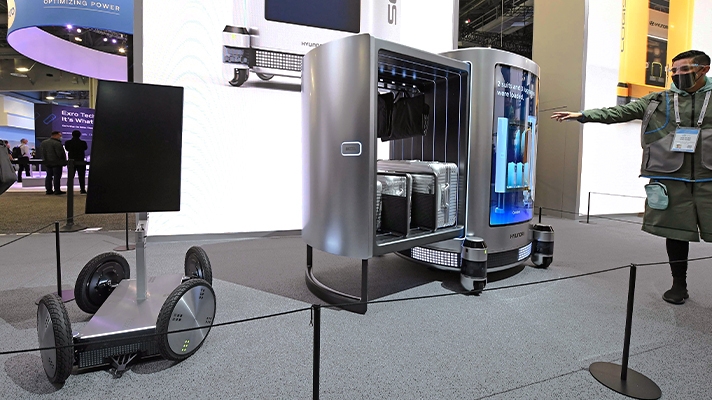
Transcending the limits of mobility is not just about connecting spaces. In the near future, space and things will come to us, not the other way around. The MoT (Mobility of Things) ecosystem, showcased at CES 2022 by Hyundai Motor Company, refers to the use of robotics technology to give mobility to all things. To realize this, Hyundai Motor Company unveiled Plug & Drive Module (PnD module) and Drive & Lift Module (DnL module).
The PnD module is an all-in-one mobility that combines an in-wheel motor, steering, suspension, brake system, and environmental sensors into one. Its feature is that it can be attached to any object to give it mobility. The PnD module utilizes lidar and camera sensors to move freely. The modules in different sizes provide mobility for a variety of objects, from tables to large containers, and can rotate 360°.
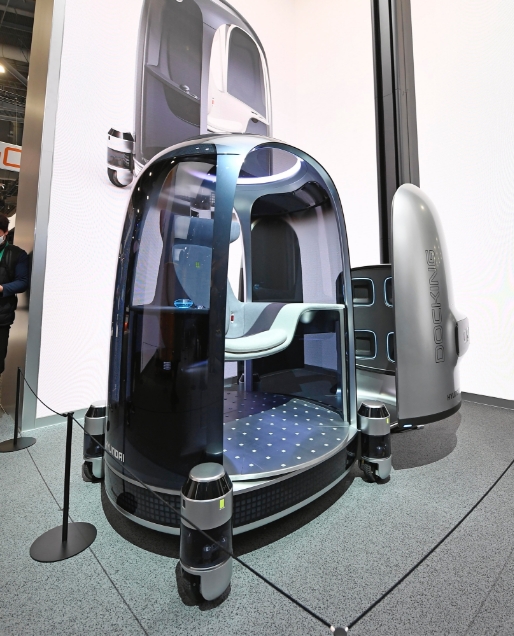
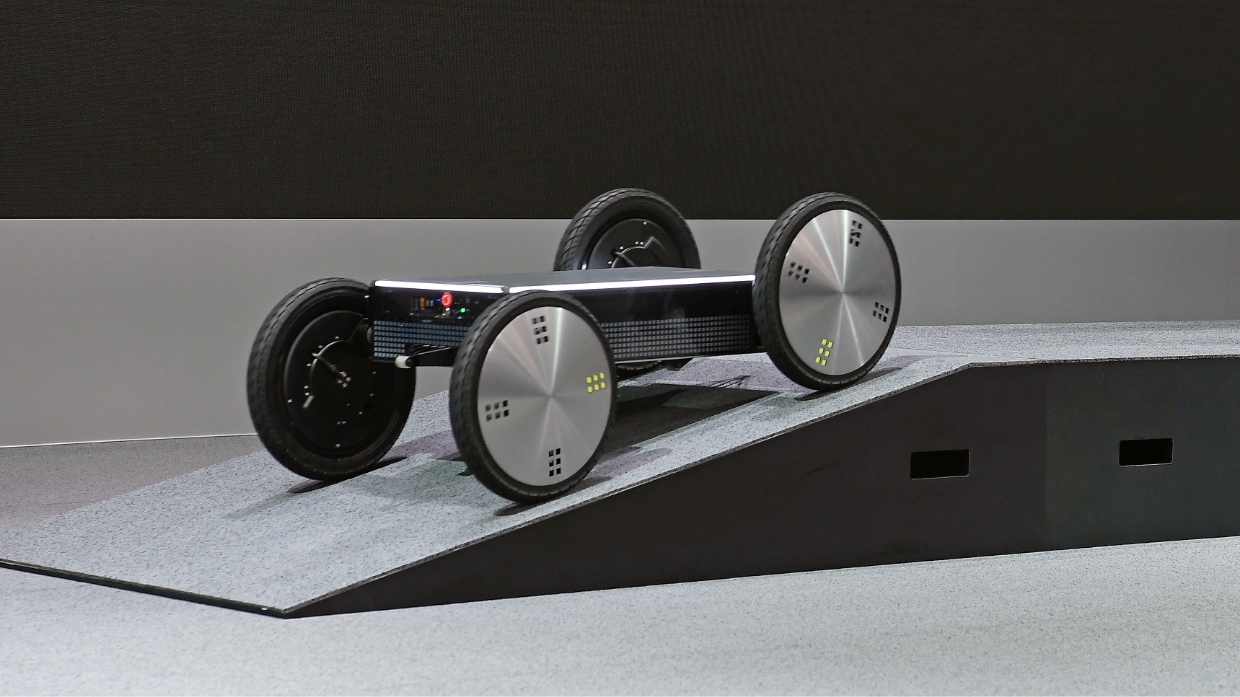
The motor mounted on each wheel of the DnL module can adjust the height of the body. The small mobility platform 'MobED (Mobile Eccentric Droid)' can use this to keep the body level on bumps, stairs, ramps, etc. - not to mention the adjustable wheelbase and steering angle. It can reliably handle various obstacles in the city center. What's more, MobED is developed as a skateboard-like platform, allowing you to add a variety of accessories.
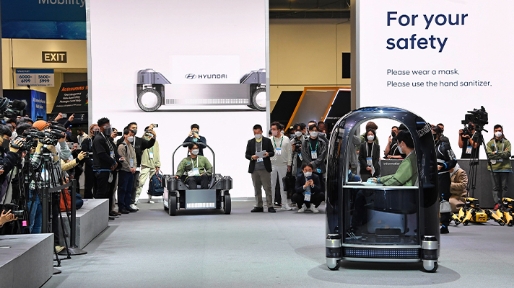
The concept of space will change when everything around us can move - from an era in which we go to space, to an era in which space comes to us. For example, if a pop-up store is equipped with a PnD module, it will also be possible to move around and find customers. On the other hand, MobED using the DnL module moves neatly even on stairs and ramps, so if it is large enough to carry people, it will greatly help the mobility of the elderly and the disabled.
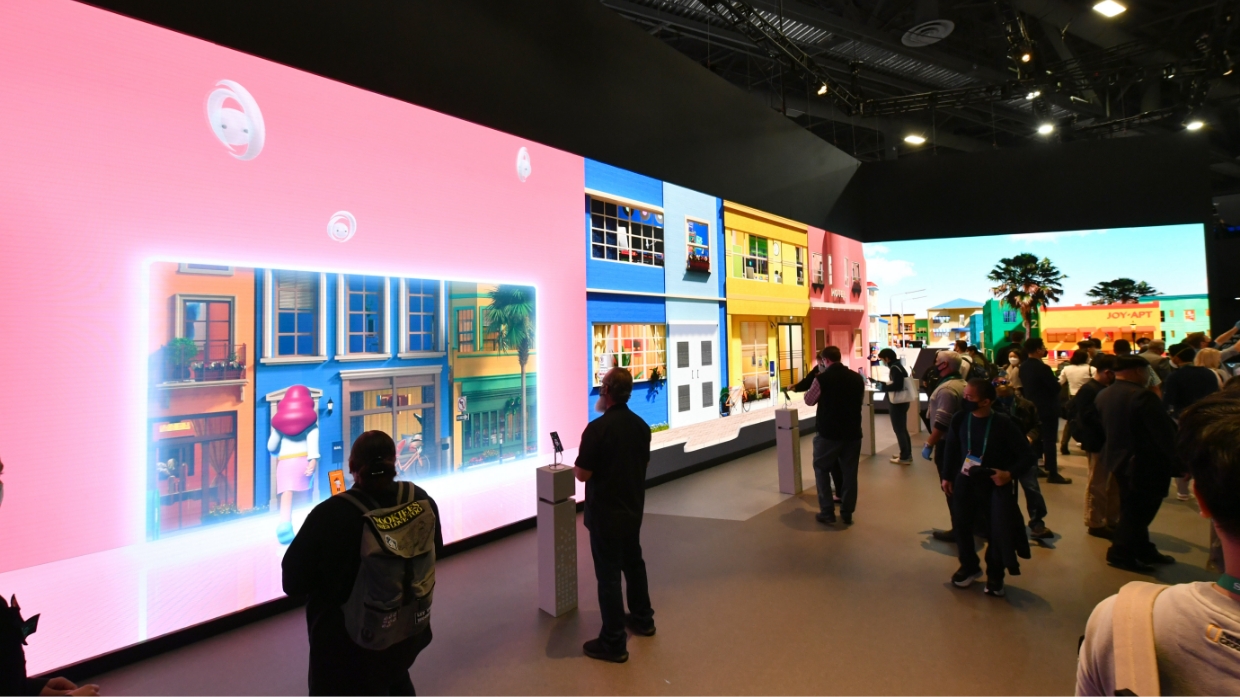
Hyundai Mobis also presented metaverse and future Mobility combined together at CES 2022. It allowed visitors at the exhibition hall to create a character they want using facial recognition technology at a kiosk, and to navigate through Hyundai Mobis M.Vision Town - its metaverse space. Visitors enjoyed M.Vision POP and M.Vision 2GO, the urban shared mobility concept cars, through their avatars in the metaverse.
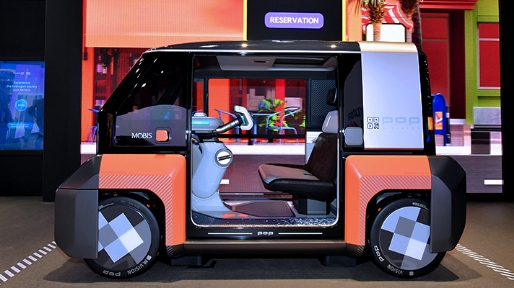
M.Vision POP is an electric vehicle-based micro-mobility. Focusing on technology that brings pleasure to users, it has enhanced sync with smartphones. When a smartphone is connected to the car, the navigation screen of the phone is linked to the front display of the vehicle as it is, and user recognition and voice recognition functions can also be used. It will even be possible to wirelessly steer a vehicle using a smartphone sensor.
The M.Vision 2GO is a hydrogen fuel cell concept car for short-distance urban delivery. As a delivery vehicle, it focuses on storage space. Displaying graphics on the side and rear windows allows communication with the outside of the car, and to reduce delivering fatigue, the steering wheel can be exchanged between the driver's and front passenger's seats, allowing two people to take turns.
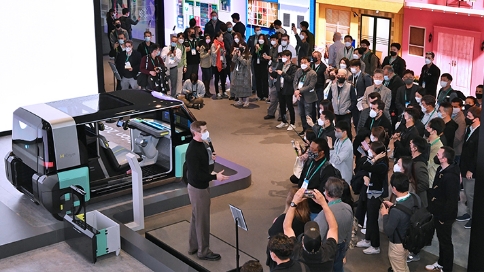
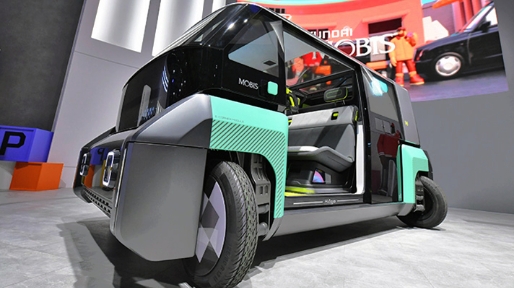
The core of the two concept cars unveiled by Hyundai Mobis is the e-Corner module, a next-generation technology that integrates driving, braking, steering, and suspension systems within each wheel of the vehicle. Because each of the four wheels of the vehicle can rotate 180°, it is possible to drive a crab that moves left and right like a crab or even rotates 360°. This technology makes driving in busy city centers and parallel parking easier. The e-Corner module is a technology that can be directly checked in the metaverse as well as in the real world. Hyundai Mobis exhibited and operated the M.Vision POP and M.Vision 2GO in the exhibition hall to show the operation scenario of the e-Corner module.
Robots can go where humans cannot. An ‘intelligent robot’ that can interact with humans and the external environment does not require direct control. Boston Dynamics 'Spot' and 'Atlas' are typical examples. For example, Spot, a service robot, can perform missions on our behalf in dangerous places that are difficult to access - such as extreme environments such as high temperature and extreme cold, natural disaster areas, radioactive contamination areas, etc.
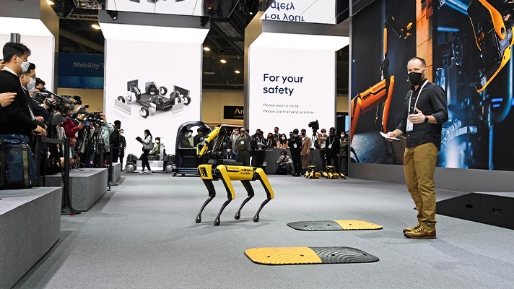
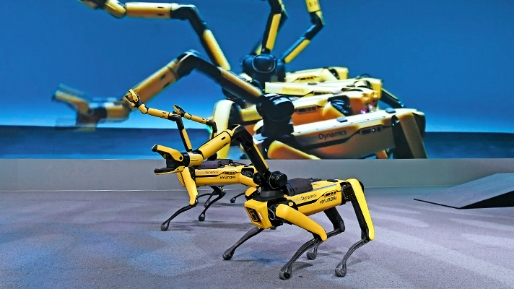
Atlas, the humanoid robot closest to human body movement, and the fast-moving logistics robot Stretch, can also handle difficult tasks on behalf of humans. As such, Hyundai Motor Group is closely collaborating with various partners so that robots can be used in wider fields and areas. In particular, in places that require exploration but are not easily reached by humans - for example, in outer space or on exoplanets - robots can play a very large role.
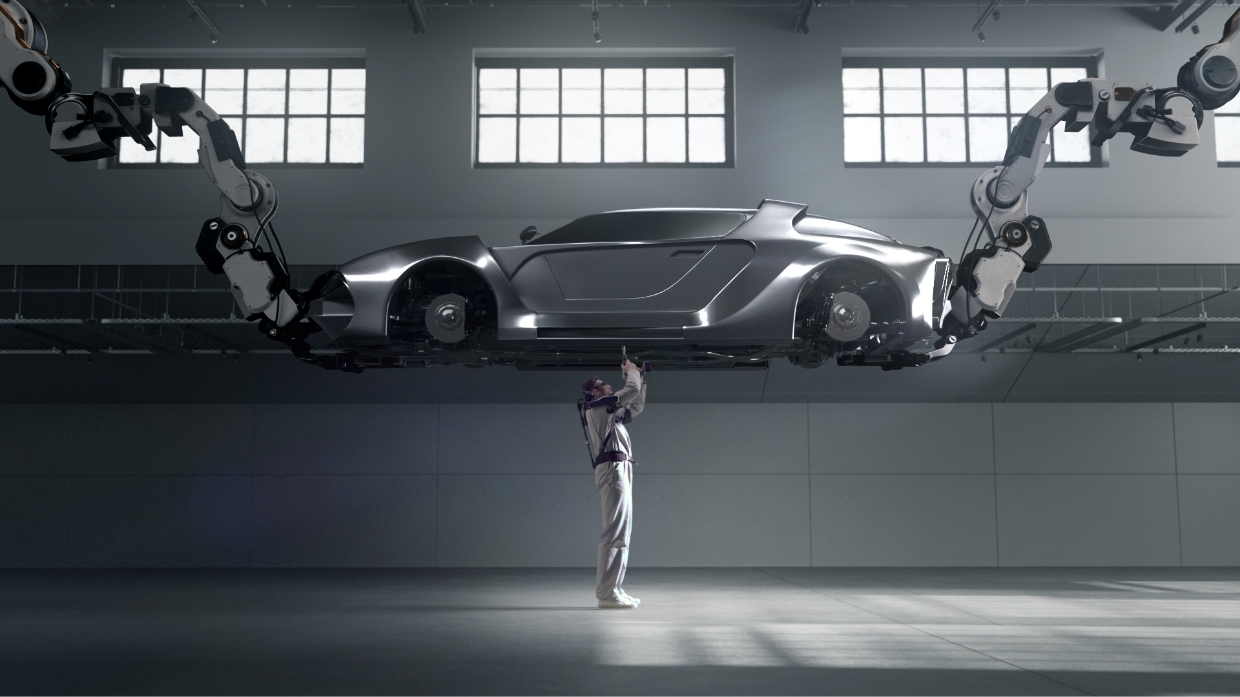
The technology of ‘wearable robot’, which helps overcome human limitations, is already of great help in our lives - for example, ‘VEX (Vest Exoskeleton)’, an industrial wearable robot developed by Hyundai Motor Company in 2019. Vex is a vest-type wearable robot that was developed to reduce musculoskeletal disorders and increase work efficiency for workers who work long hours looking up.
Vex can be worn as if wearing a vest, and since it weighs only 2.5kg, it is comfortable to use for a long time. It can exert a force of up to 5.5 kgf; This means that when an adult lifts a 3kg tool, the weight is barely felt. Wearable robots not only reduce the risk of injury for workers but also improve the convenience of the mobility-impaired. And in the future when technology evolves, various sensory data collected by robots will be transmitted to users, making it possible for us to feel through robots.
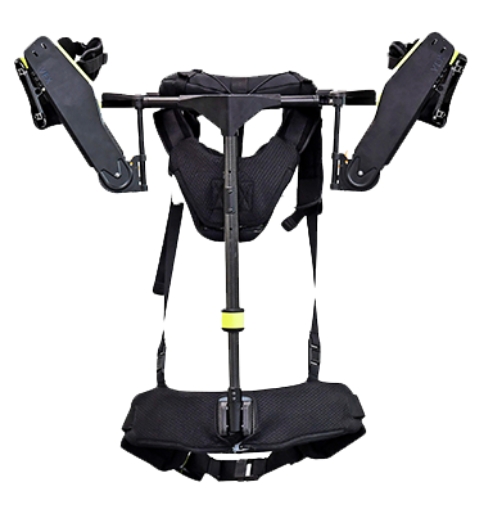
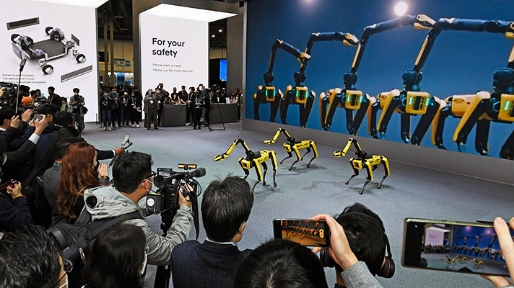
Hyundai predicts that the experience that robotics technology can provide will bring about a huge change in our daily life, the way we work, and even the industry as a whole. The role of robotics in the future society will grow even bigger. Robotics is no longer a story of the distant future. Hyundai Motor Group will soon make various technologies for humans a reality.